Inside The New York Botanical Garden
bonsai
Posted in Around the Garden, Exhibitions on October 3 2013, by Ann Rafalko
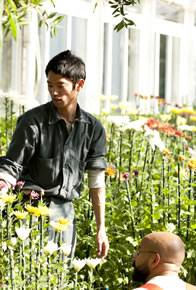 You probably know (or at least think you know) all about bonsai, the Japanese art of growing, tending, and shaping miniature trees in trays. But do you know about kiku? Where bonsai is small, kiku is large. Where bonsai is about long life, kiku is about ephemerality. Where bonsai is about a minimal aesthetic, kiku is about color, pattern, and profusion.
You probably know (or at least think you know) all about bonsai, the Japanese art of growing, tending, and shaping miniature trees in trays. But do you know about kiku? Where bonsai is small, kiku is large. Where bonsai is about long life, kiku is about ephemerality. Where bonsai is about a minimal aesthetic, kiku is about color, pattern, and profusion.
Or at least that is how we interpret this tradition of shaping and tending chrysanthemums in Kiku: The Art of the Japanese Garden, opening Saturday in the Enid A. Haupt Conservatory. Many of these huge chrysanthemum “sculptures” begin as one single stem, despite looking like brilliant tapestries of many flowering plants woven together. They are tended for months on end to bloom for just a few weeks. There is no way for us to extend kiku beyond their natural lifespan, so to see them in their full glory, you have got to act fast!
Read More
Posted in Photography on September 25 2011, by Ann Rafalko
Pinus sylvestris. The approximate age and years of training of this the Moyogi Style (informal upright) bonsai are unknown. This beautiful bonsai was bequeathed to The New York Botanical Garden by Manny Dannett and re-styled and trained by Saeko Oshiro.
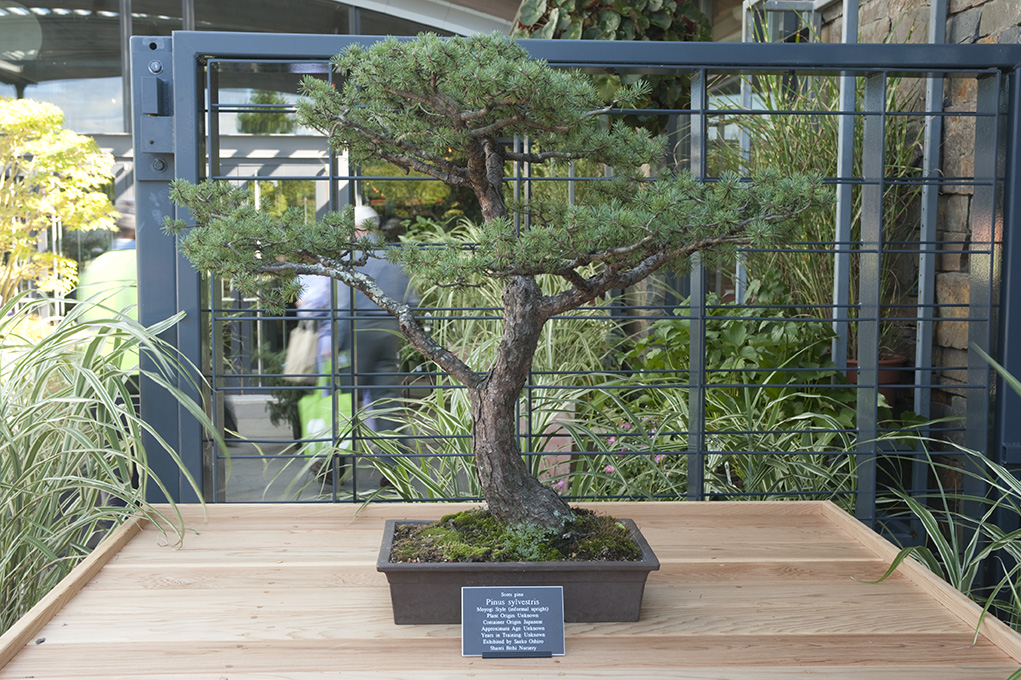
Pinus sylvestris (photo by Ivo M. Vermeulen)
Head below to learn more about how to see this beautiful bonsai.
Posted in Photography on September 23 2011, by Ann Rafalko
Juniperus chinensis ‘Shimpaku’. Approximately 20-5o years old, and 18 years in training in the Fukingushi Style (windswept). This beautiful bonsai is exhibited by Saeko Oshiro and Oscar Sanchez.
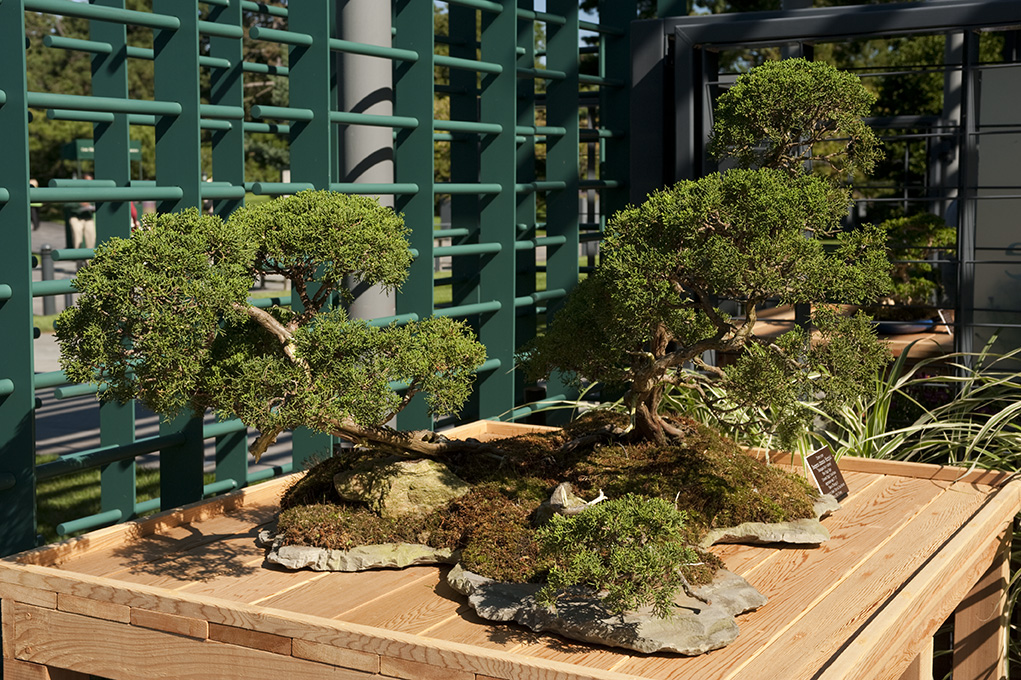
Chinese Juniper Juniperus chinensis ‘Shimpaku’ (photo by Ivo M. Vermeulen)
Head below to learn more about how to see this beautiful bonsai.
Posted in Around the Garden on September 22 2011, by Ann Rafalko
Kingsville Boxwood Buxus microphylla ‘Compacta.’ Approximately 55 years old, and 34 years in training in the Ne Tsuranari Style (sinuous raft). This beautiful bonsai is exhibited by Jerome Rocherolle.
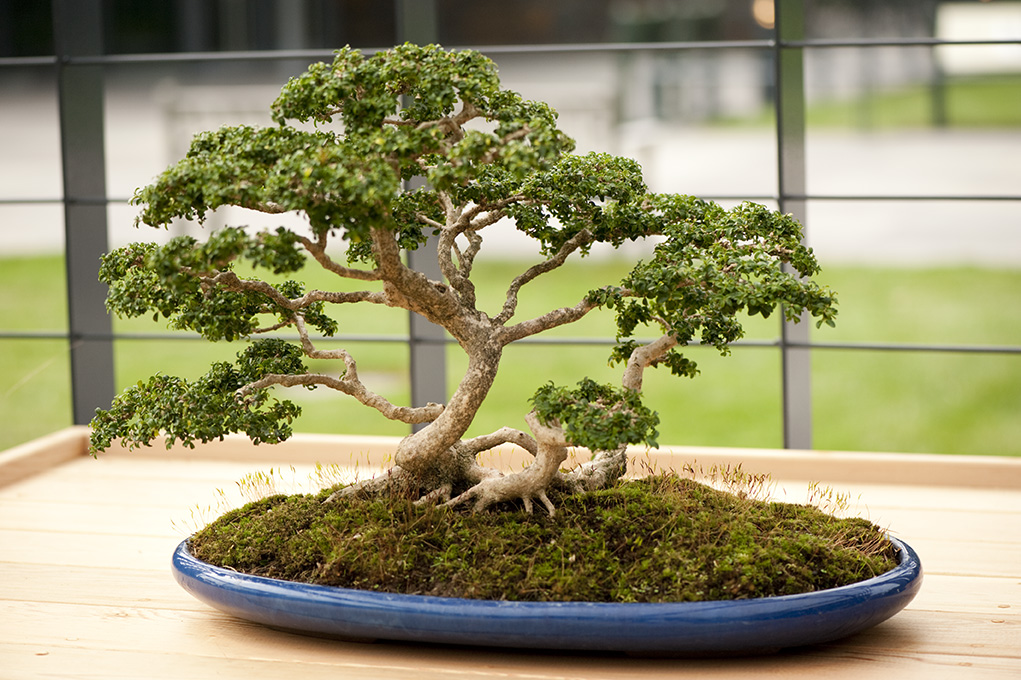
Kingsville Boxwood Buxus microphylla ‘Compacta’ (photo by Ivo M. Vermeulen)
Head below to learn more about how to see this beautiful bonsai.
Posted in Photography on September 21 2011, by Ann Rafalko
Cedrus atlantica ‘Glauca.’ Approximately 25 years old, and 18 years in training in the Yos ue Style (forest). This beautiful bonsai is exhibited by Saeko Oshiro.
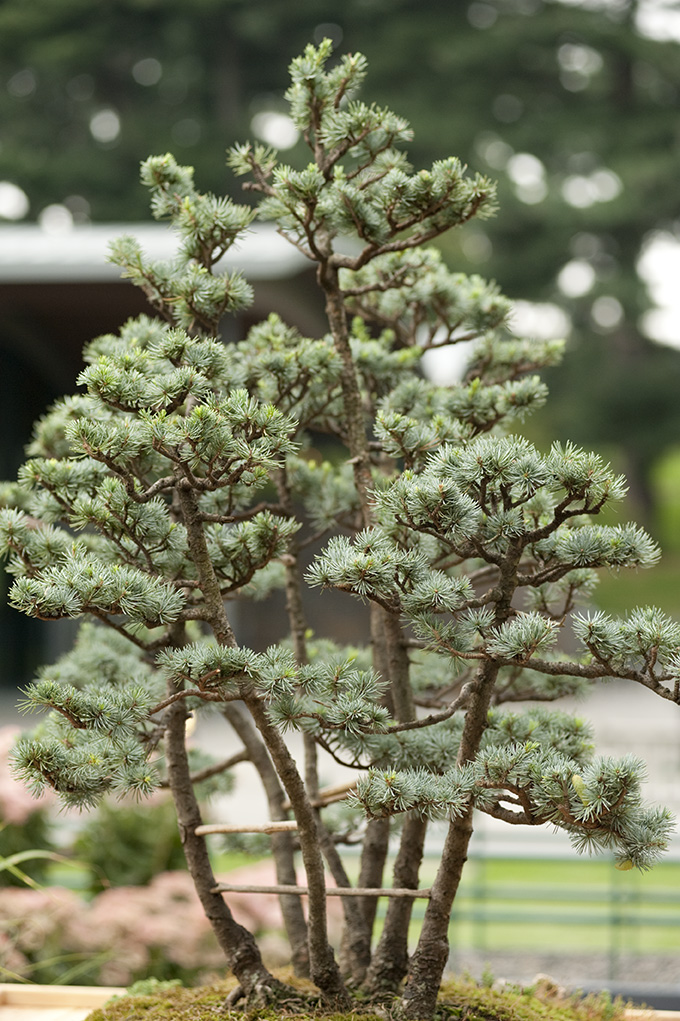
Blue Atlas Cedar Cedrus atlantica ‘Glauca’(photo by Ivo M. Vermeulen)
Head below to learn more about how to see this beautiful bonsai.
Posted in Photography on September 20 2011, by Ann Rafalko
Carpinus turczaninovii. Approximately 20-40 years old, and 18 years in training in the Yos ue Style (forest). This beautiful bonsai is exhibited by Jerome Rocherolle.
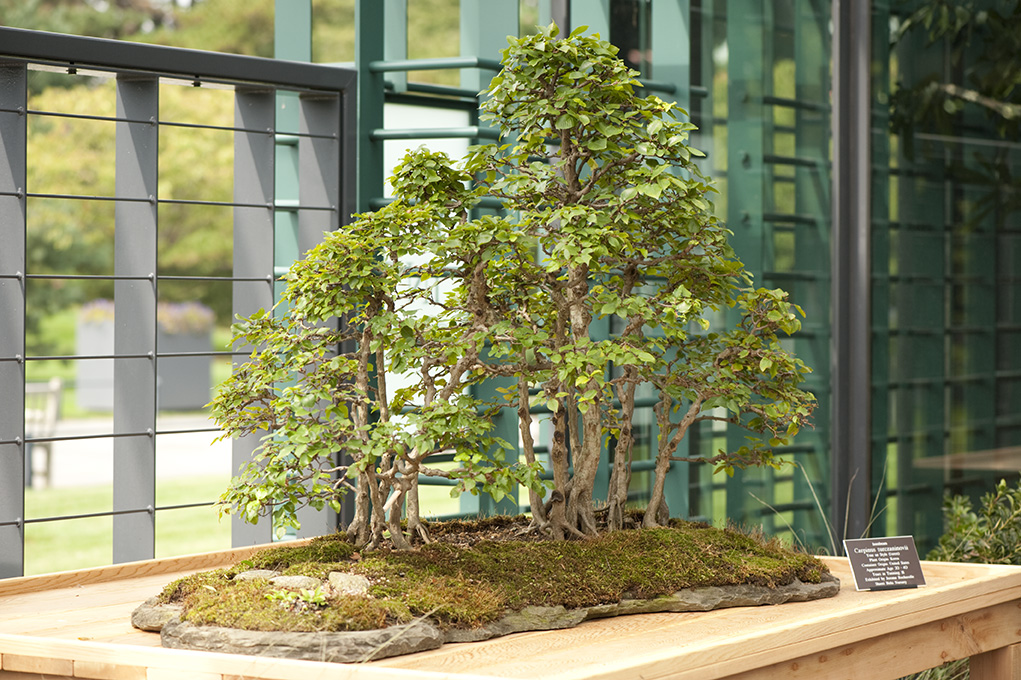
Hornbeam bonsai Carpinus turczaninovii (photo by Ivo M. Vermeulen)
Head below to learn more about how to see this beautiful bonsai.
Posted in Exhibitions, Kiku on October 21 2009, by Plant Talk
Special Display by Yama Ki Society on through November 1
 |
Michael Pollock is Vice-President of Yama Ki Bonsai Society, whose members will display their bonsai in the Enid A. Haupt Conservatory during Kiku in the Japanese Autumn Garden. |
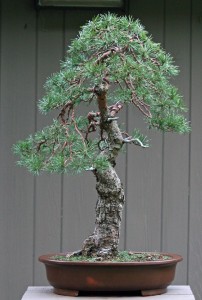 Bonsai’s beginning is shrouded in the mists of time. With origins in either China or India, bonsai (or penjing in Chinese) found fertile ground when visiting Buddhist monks brought potted trees to Japan. When Japan opened up to the West, interest in bonsai, which means “tray planting,” reignited throughout Asia and began to spread to other parts of the world. As the art form continues to reach new areas, new plants are used to create local bonsai. Whatever the climate, there are plants that can make beautiful bonsai.
Bonsai’s beginning is shrouded in the mists of time. With origins in either China or India, bonsai (or penjing in Chinese) found fertile ground when visiting Buddhist monks brought potted trees to Japan. When Japan opened up to the West, interest in bonsai, which means “tray planting,” reignited throughout Asia and began to spread to other parts of the world. As the art form continues to reach new areas, new plants are used to create local bonsai. Whatever the climate, there are plants that can make beautiful bonsai.
I first studied bonsai in 1982 with Yuji Yoshimura at The New York Botanical Garden. I was immediately captivated by a mixture of feelings these trees elicited from me: tranquility, calmness, excitement. Unfortunately, a busy career prevented me from seriously practicing bonsai then and I gave up. Twelve years ago, I realized that if I could successfully raise children, I could probably grow bonsai, too. It has been a wonderful journey of discovery and creation ever since. Now I grow between 40 and 50 bonsai. In 2004 I won a prestigious “new talent” competition and was awarded a trip to Japan, where I visited many of the most famous bonsai nurseries, growing fields, and public and private collections.
There are many ways to create a bonsai: starting with seeds or cuttings, buying a plant from a nursery (Shanti Bithi Bonsai Nursery in Stamford, Conn, has been an important resource) or collecting a tree from the wild. Of course, for beginners it takes longer to establish an impressive bonsai, but someone with experience can create a “showable” tree within three to five years. Older bonsai plants bring their own stories with them as they are trained, whether it be the twisted and scarred trunks with old, flaky bark or the bonsai practitioners who have cared for the tree over generations, as is witnessed in Japan and China.
Read More
 You probably know (or at least think you know) all about bonsai, the Japanese art of growing, tending, and shaping miniature trees in trays. But do you know about kiku? Where bonsai is small, kiku is large. Where bonsai is about long life, kiku is about ephemerality. Where bonsai is about a minimal aesthetic, kiku is about color, pattern, and profusion.
You probably know (or at least think you know) all about bonsai, the Japanese art of growing, tending, and shaping miniature trees in trays. But do you know about kiku? Where bonsai is small, kiku is large. Where bonsai is about long life, kiku is about ephemerality. Where bonsai is about a minimal aesthetic, kiku is about color, pattern, and profusion.






